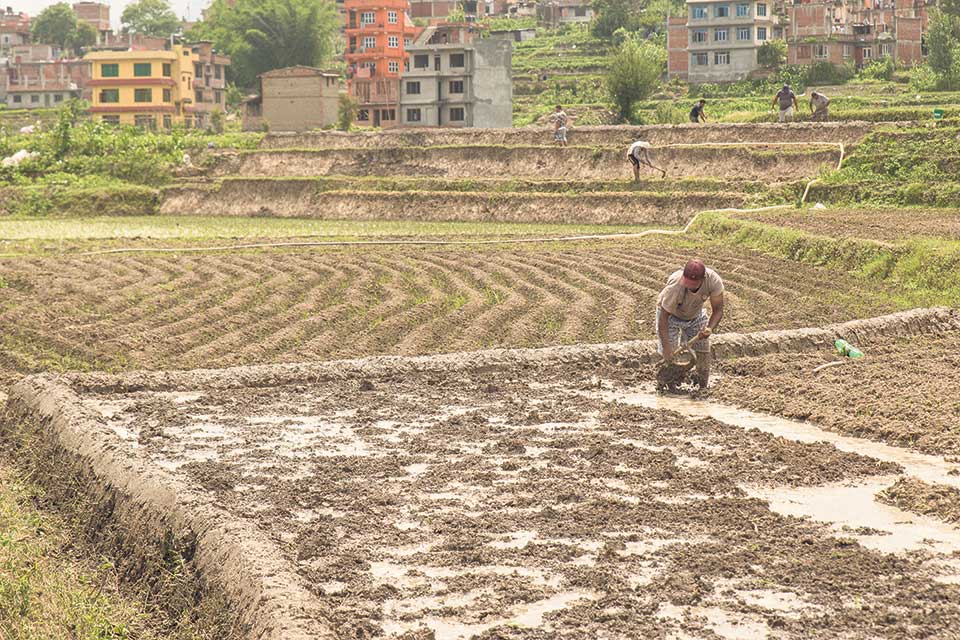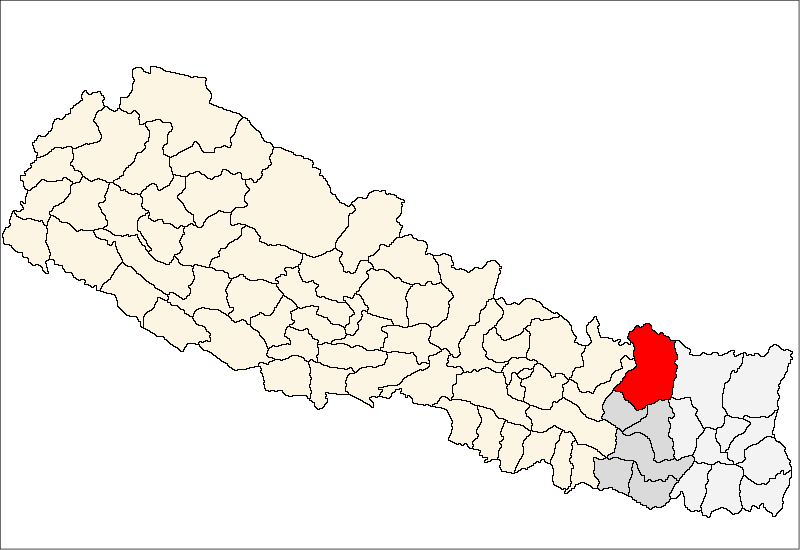
OR
#Seventh National Agricultural Census 2021
Nepal's cultivable land area shrinks by 300,000 hectares to 2.2 million hectares over the past decade
Published On: September 7, 2023 09:30 PM NPT By: Republica | @RepublicaNepal

KATHMANDU, Sept 7: Nepal's arable land area has declined by 300,000 hectares in the past decade. The Seventh National Agricultural Census 2021 shows that the country cultivates 2.2 million hectares of land. The similar census carried out in 2011 shows that there were 2.5 million hectares of land used for agricultural purposes.
The National Statistics Office (NSO) conducted the census between April 19, 2022, and June 2, 2022. The latest survey shows that there are 4,130,789 families depending on agriculture for their livelihood. A decade ago, this figure was 4,831,093. The census reveals that the number of households involved in agriculture has been declining steadily.
Likewise, the dependency on agriculture has also declined of late. The dependency ratio on agriculture has fallen to 62 percent from 71 percent.
The latest agricultural census of 2021 also shows that 3,372,000 families (82 percent of the agriculture-dependent families) own land for farming and rear livestock. A total of 689,000 (17 percent) of farming families lease agricultural land, apart from their own land, for cultivation purposes.
Over the past decade, the number of farming families involved in livestock farming has increased from 3.3 million to 3.4 million. Likewise, 10,375 farming families have engaged in nursery farming on 597.7 hectares of land.
In terms of gender, the 2011 census showed that 81 percent of main farmers were men, whereas women accounted for 19 percent. However, in the 2021 census, men's representation has decreased to 67.6 percent, while women's representation has increased to 32.4 percent.
The latest census statistics also indicate that 70.4 percent of farmer households consider agriculture the main source of their income, down from 83.1 percent in the previous census. The census shows that around 55 percent of farmers cannot produce enough food to meet their annual demand. Previously, the figure was 60 percent under this category.
Likewise, 47 percent can manage food for 4-6 months from their farmland while 24 percent say their produce is sufficient for less than three months for their families.
Meanwhile, the irrigation facility expanded by 2.5 percent of the arable land in the past decade. In 2011, irrigation facilities were accessible on 52 percent of the arable land, which grew to 54.5 percent in the review period.
You May Like This

Nepal's literacy rate rises to 76.3 percent
KATHMANDU, March 24: Nepal's literacy rate has increased from 65.9 to 76.3 percent, compared to the year 2068 BS. ... Read More...

NPC projects Nepal to upgrade to middle-income country by 2030 but NSO paints bleak picture of economy
At a time when the economic growth rate has been sluggish, a report prepared by the National Planning Commission (NPC)... Read More...

Cultivable land declines in Chilime watershed area
RASUWA, Sep 1: The area of farmland is declining in the Chilime watershed area in Rasuwa district. ... Read More...




Just In
- NEA Provincial Office initiates contract termination process with six companies
- Nepal's ready-made garment exports soar to over 9 billion rupees
- Vote count update: UML candidate continues to maintain lead in Bajhang
- Govt to provide up to Rs 500,000 for building houses affected by natural calamities
- China announces implementation of free visa for Nepali citizens
- NEPSE gains 14.33 points, while daily turnover inclines to Rs 2.68 billion
- Tourists suffer after flight disruption due to adverse weather in Solukhumbu district
- Vote count update: NC maintains lead in Ilam-2













Leave A Comment